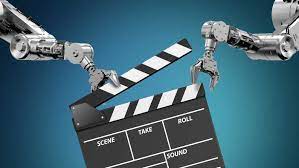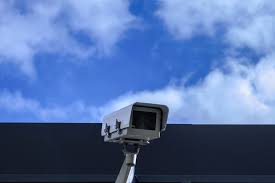Introduction
The world of film and animation is undergoing a revolutionary transformation with the integration of Artificial Intelligence (AI) into Computer-Generated Imagery (CGI). AI technologies are reshaping the way filmmakers and animators create visual spectacles, from realistic characters to breathtaking environments. In this article, we delve into the CGI advancements propelled by AI, exploring how these innovations are elevating the art of storytelling in the realms of cinema and animation.
Realistic Character Animation
AI-driven CGI is enabling the creation of remarkably realistic characters. Machine learning algorithms analyze human movements and expressions, allowing animators to generate lifelike animations with unprecedented detail. This technology enhances character performances, making them more authentic and emotionally resonant, transcending the limitations of traditional animation.
Facial Recognition and Expression Mapping
Facial recognition technology integrated into CGI facilitates precise mapping of facial expressions onto animated characters. AI algorithms analyze the subtle nuances of human expressions, translating them into digital characters. This level of detail adds a new layer of authenticity, capturing the intricacies of emotions and expressions in a way that was once challenging to achieve.
Procedural Content Generation
AI contributes to procedural content generation in CGI, streamlining the creation of vast and intricate virtual worlds. Algorithms can autonomously generate landscapes, cityscapes, and environments, reducing the manual workload for animators. This efficiency allows filmmakers to envision and bring to life expansive, immersive settings with greater ease.
Deep Learning for Animation Style Transfer
Deep learning techniques are employed for animation style transfer, allowing filmmakers to apply distinct visual styles to their CGI creations. This technology enables the adaptation of artistic styles from paintings, illustrations, or even live-action footage to CGI animations. The result is a diverse range of visual aesthetics, pushing the boundaries of creative expression in animated storytelling.
Enhanced Textures and Details
AI enhances the texturing and detailing of CGI elements, bringing a level of realism that was previously challenging to achieve. Machine learning algorithms analyze real-world textures and apply them seamlessly to digital objects. This advancement is particularly noticeable in the rendering of surfaces, fabrics, and materials, contributing to a more immersive visual experience.
AI-Driven Motion Capture
Motion capture technology, powered by AI, has evolved to capture and interpret human movements with exceptional accuracy. This technology allows filmmakers to record the performances of live actors and seamlessly transfer them to CGI characters. The result is fluid, natural movements that enhance the overall cinematic experience.
Intelligent Camera Systems
AI-driven camera systems add a dynamic and cinematic quality to CGI sequences. These intelligent systems analyze the narrative context and automatically adjust camera angles, framing, and movements to enhance storytelling. The result is visually captivating sequences that elevate the impact of CGI in film and animation.
Adaptive Lighting and Rendering
AI contributes to adaptive lighting and rendering techniques in CGI, enhancing visual quality and realism. Algorithms analyze the interplay of light and shadows, dynamically adjusting lighting conditions to create visually stunning scenes. This technology adds depth and dimension to CGI, making animated worlds more visually captivating.
Automated Lip Syncing
Creating accurate lip syncing for animated characters traditionally required meticulous manual effort. AI automates this process by analyzing speech patterns and syncing character lip movements to match dialogue seamlessly. This innovation streamlines the animation workflow, saving time and ensuring precise lip synchronization in CGI productions.
Predictive Animation Editing
AI’s predictive capabilities extend to animation editing, where algorithms analyze the pacing, timing, and composition of scenes. This technology assists animators in making informed decisions during the editing process, resulting in cohesive and visually engaging sequences that enhance the overall storytelling experience.
Conclusion
AI-driven CGI advancements are redefining the possibilities of cinematic storytelling and animation. From realistic characters to immersive environments, these technologies bring a new level of sophistication to the art of filmmaking. As AI continues to evolve, the synergy between technology and creative expression promises a future where CGI seamlessly integrates with live-action, pushing the boundaries of visual storytelling in ways that captivate audiences worldwide.




